i have a few questions about this. #1 how does one person have that kind of power, to dictate how every child in this country can and cannot eat. #2 since when does the government have the right to dictate what parents want their kids to eat? my wife was a cafeteria manager for a local high school for 5 years, she quit about a month ago. she used to bring dinner home every day from school, of course she paid for it. in all those years i never had but maybe 2 things she brought home that i didn't eat, and that's because i just didn't like it anyway. then , along comes this michelle bi otch and suddenly,it's all inedible. i saw more wasted food than you could imagine and all for nothing except it was sub standard and just slop. thank god almighty it is going away.
Search found 97 matches for 2
Beware of Bond Funds - Tue 20 Dec 2016, 4:00 pm

QUESTION #1: Dear Mr Armstrong, you recently wrote that if you are in any bond fund, better get out. Do you also mean corporate short-term/medium-term bonds or are those expected to rise when people realise government debt is the real bubble ?
Kind regards.
WL.
QUESTION #2: Mr. Armstrong- I enjoyed my first WEC immensely! In the blog and other place’s you warned that you should get out of bond funds. I understand government bonds of all kinds should be sold including date certain and funds. I am curious though about high-quality corporate bond funds. Should one get out of corporate bond funds and move to individual issues? The funds are easier for a working person of course.
Thank you,
KO
ANSWER: We are entering a phase of rising interest rates, so bond funds will do poorly. We are not yet at a stage where U.S. government bonds would default or be swapped. Therefore, my recommendation has only to do with rising rates. What you should do is stay short-term, like 90-day paper or less, be it corporate or government. This is just an interest rate play moving into 2018.
As we move into 2018, we will look at corporate vs government shift. That will become the play, but that will most likely unfold after we begin to see serious problems with government debt outside the United States. In Japan, the ownership of public debt by the private sector is in freefall. Debt to GDP held by the private sector before Abe came to power was 177%, which had collapsed to 100% in 2012, and has continued to decline to about 75%. The Bank of Japan through its quantitative easing now owns more government debt than the private sector. Japan is in VERY SERIOUS trouble and there is no possible way to reverse this nightmare.
The European Central Bank now holds 15% of Germany’s national debt. The central banks have been running out of positive-yielding safe-haven bonds. Yes, the Federal Reserve holds $2.4 trillion is less than 10%. The volume of repo loans using Treasury debt as collateral has collapsed from $2.6 trillion to about $1.8 trillion according to Barclays.
Despite all the complaints that QE has failed, we must ask how deep deflation would be without it. True, QE has not produced inflation. It has not stimulated the economies of Europe or Japan because the confidence of the people is not there. The central banks are trapped and politicians, not hedge fund managers, run government. These people are ignorant at best if not outright deaf, dumb, and stupid. They cannot see how this system of government borrowing will continue if the public no longer buys their debt.
This is by no means going to end nicely. So keep the power dry. We are in for a real crisis come 2018.
https://www.armstrongeconomics.com/markets-by-sector/bonds/bonds-funds-beware/
Trilby #2 - Fri 16 Dec 2016, 3:16 pm

Trilby #2
Prep Time: 5 minutes
Cook Time: 0 minutes
Servings: 1
This cocktail calls for Famous Grouse, a brand of blended Scotch whiskey. Parfait amour, a purple-colored liqueur, exhibits flavors of orange, vanilla, rose and almond.
Ingredients:
- Ice as needed
- 1 1/2 oz. Famous Grouse
- 3/4 oz. Dolin sweet vermouth
- 1/2 oz. parfait amour
- 2 dashes of orange bitters
- 2 dashes of absinthe
Related Recipes
Directions:
In a cocktail shaker half filled with ice, combine the Famous Grouse, vermouth, parfait amour, orange bitters and absinthe and shake until well chilled, 20 to 30 seconds. Strain into a martini glass and serve immediately. Serves 1.Recipe by Bourbon & Branch, San Francisco.
Sparkling Fresh Paloma - Fri 16 Dec 2016, 2:05 pm

Sparkling Fresh Paloma
Prep Time: 5 minutes
Cook Time: 0 minutes
Servings: 1
This recipe for the tequila-based cocktail known as a paloma was created by the beverage experts at Bourbon & Branch, a well-known San Francisco bar.
Ingredients:
- Ice as needed
- 2 oz. tequila
- 3/4 oz. fresh lime juice
- 1/2 oz. Simple Syrup
- 2 oz. fresh grapefruit juice
- Mint sprig for garnish
- Curled lemon peel for garnish
Related Recipes
- Simple Syrup >
- Minty Cantaloupe Agua Fresca >
- Trilby #2 >
- Campari and Soda >
- Raspberry Champagne Cocktail >
Directions:
In a cocktail shaker filled halfway with ice, combine the tequila, lime juice, simple syrup and grapefruit juice and shake until well chilled, 20 to 30 seconds. Strain into a highball glass, garnish with the mint sprig and lemon peel, and serve immediately. Serves 1.Recipe by Bourbon & Branch, San Francisco.
Sakerinha - Fri 16 Dec 2016, 1:45 pm

Sakerinha
Prep Time: 5 minutes
Cook Time: n/a minutes
Servings: 1
Combining lime and spirits is always a win: a margarita does it with tequila, a gimlet does it with gin and a mojito does it with rum. In this recipe, sake and lime juice are combined for a spin on Brazil’s national cocktail, the caipirinha.
Ingredients:
- 1 lime, cut into 8 wedges
- 2 tsp. superfine sugar, or to taste
- Crushed ice as needed
- 6 Tbs. (3 fl. oz./90 ml) sake
Related Recipes
Directions:
Combine the lime wedges and sugar in an old-fashioned glass. Using a cocktail muddler or the end of a wooden spoon, crush the ingredients in the bottom of the glass, pressing to extract as much juice as possible from the lime wedges. Add a handful of crushed ice and top off with the sake. Stir and serve. Makes 1 drink.Adapted from Williams-Sonoma Good Food to Share, by Sara Kate Gillingham-Ryan (Weldon Owen, 2010)
Back-to-Back Arctic Blasts Sending Midwest, Northeast into a Deep Freeze Through the Weekend - Thu 15 Dec 2016, 7:01 pm
Back-to-Back Arctic Blasts Sending Midwest, Northeast into a Deep Freeze Through the Weekend
Chris Dolce
Published: December 15, 2016
A bitter cold arctic air mass has swept through a large swath of the central and eastern states to close out the workweek, sending wind chills into the teens, 20s and 30s below zero in some locations. Extreme cold will continue this weekend as an even more frigid blast of arctic air plunges into the central states on the heels of Winter Storm Decima.
(MORE: Another Winter Storm in the Midwest)
Some locations have seen or could see their coldest December temperatures in several years, and some record lows may be threatened.
(MORE: What the Wind Chill Really Means)
Current Wind Chills
Arctic Cold Round #1: Through Friday
Great Falls, Montana, recorded its tenth straight day in a row with subzero lows on Wednesday morning. That is longest such streak there since February 1996.Thursday morning, subzero low temperatures were recorded as far south as Iowa, northern Illinois and northern Indiana. Winds chills in the 20s and 30s below zero were widespread throughout the Upper Midwest.
Chicago saw its first December subzero low temperature since Dec. 24, 2013. The mercury plunged to minus 20 degrees in Grand Forks, North Dakota, making it the coldest December reading in the city since Dec. 23, 2013.

Current Temperatures
Temperatures held in the 20s on Thursday afternoon along the Interstate 95 corridor from Boston to Washington, D.C. A large number of cities from the interior Northeast to the Great Lakes and Upper Midwest saw afternoon readings in the single digits or teens, including Chicago, Minneapolis and Pittsburgh.
Friday morning looks to be the coldest for many Northeast cities, with lows 15-30 degrees below average. Single digits above and below zero are expected in parts of upstate New York, northern/western Pennsylvania and New England. Wind chills will be in the single digits, teens and even a few 20s below zero across the interior Northeast and New England Friday morning. A few places in northern New England could see wind chills in the 30s below zero.

Forecast Morning Lows
(FORECAST: Bismarck, North Dakota | Chicago | Minneapolis | Boston | New York)
Cold Perspective
- Boston: A low of 8 degrees or colder would be the lowest official December temperature in the city since 2004.
- Pittsburgh: The first single-digit December low temperature since Dec. 31, 2009 (9 degrees), is possible Friday morning.
- Washington, D.C.: A low in the teens Friday morning would be the first time the mercury has dipped below 20 degrees there in December since Dec. 23, 2008.
Arctic Cold Round #2: This Weekend
The second plunge of arctic air will begin seeping south of the Canadian border and into the northern Plains (western Dakotas, Montana) on Friday. That cold air will spread east and south across the Midwest and Plains during the upcoming weekend and into early next week.This weekend's temperatures will be the coldest we've seen so far this month in some locales, and daily record lows may be threatened.

Forecast Highs This Weekend
(MAPS: 10-Day Forecast)
- Lows: Temperatures in the teens and 20s below zero will infiltrate areas from Montana to the Dakotas and the upper Mississippi Valley this weekend. In some locations, this will be 20-45 degrees below mid-December average lows. Single digits below zero may surge into the Front Range of Colorado, Kansas, northern Missouri and northern Illinois on Sunday morning. By Monday morning, lows in the teens and single digits below zero could continue the Great Lakes and upper Mississippi Valley.
- Highs: Afternoon readings may not rise above zero in the northern Plains, upper Midwest and western Great Lakes this weekend, including Minneapolis and Fargo, North Dakota.
- This round of arctic air will move into the Northeast early next week, but it won't be as cold as we will see in the Midwest.

Forecast Low Temperatures Compared to Average Sunday
Cold Perspective For This Weekend
- Chicago: There is a chance that the Windy City may see a subzero high temperature on Sunday. The last high temperature that was below zero there was in January 2014. The last below-zero high temperature there in December was in 1983.
- Bismarck, North Dakota: Saturday's high may be in the teens below zero. The last time they recorded a high in the double digits below zero in December was 2008. They haven't had a high in the teens below zero in any month since January 2010.
- Minneapolis: If the mercury plunges into the 20s below zero, that would be the first time it's happened there in December since 1996. The last 20s below zero in the Twin Cities for any month occurred in January 2014.
Will Any Record Lows Be Set?
Some daily record lows could be approached in the Midwest this weekend into Monday. Below are a few examples with the record to beat for each city on that respective day shown.- Saturday: Bismarck, North Dakota (-27 degrees); Omaha, Nebraska (-9 degrees)
- Sunday: Aberdeen, South Dakota (-28 degrees); Minneapolis (-24 degrees)
- Monday: Chicago (-14 degrees); Detroit (-6 degrees)
https://www.wunderground.com/news/back-to-back-arctic-cold-blasts-midwest-east-december-2016
Limoncello Martinis - Thu 08 Dec 2016, 8:03 pm
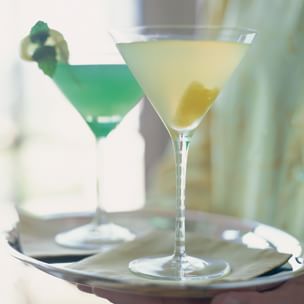
Limoncello Martinis
Prep Time: 10 minutes
Cook Time: 0 minutes
Servings: 6
When preparing cocktails, use ice made from purified distilled water instead of tap water to avoid off flavors. The crystal-clear appearance of purified ice will also lend a sparkle to your drinks. A few lemon slices in the shaker will add a pleasant flavor.
Ingredients:
- Ice cubes as needed
- 1 cup limoncello liqueur
- 1 cup gin
- 6 lemon twists
Related Recipes
Directions:
Put 6 martini glasses in the freezer to chill for at least 15 minutes.Just before serving, fill a cocktail shaker half full with ice. Pour half of the limoncello and half of the gin over the ice. Cover with the lid and shake vigorously for about 10 seconds. Strain into 3 of the chilled glasses, dividing evenly. Repeat to make 3 more drinks. Garnish each glass with a lemon twist. Serve immediately. Serves 6.
Adapted from Williams-Sonoma Easy Entertaining, by George Dolese (Simon & Schuster, 2005).
Gin Sling - Wed 07 Dec 2016, 5:56 pm
Gin Sling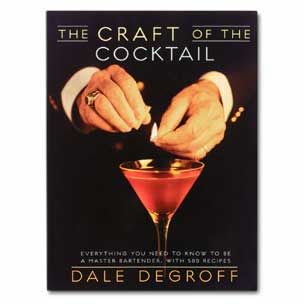
Prep Time: 10 minutes
Cook Time: 0 minutes
Servings: 1
This is a late-19th-century sling recipe that the author served for years at the Rainbow Room with great success. The ladies from the photo-editing department of the Associated Press next door were especially fond of this recipe. The cocktail was first described in print as a bittered sling. Before the addition of bitters, a sling was spirits, sugar water and sometimes lemon.
Ingredients:
- 1 1/2 oz. gin
- 1 oz. sweet vermouth
- 3/4 oz. fresh lemon juice
- 1 oz. simple syrup (see related tip at right)
- 1 dash Angostura bitters
- Ice as needed
- Soda water as needed
- Lemon-peel spiral for garnish (see related tip at
right)
Related Recipes
Directions:
In a cocktail shaker, combine the gin, vermouth, lemon juice, simple syrup, bitters and ice. Shake, then strain over ice into a collins glass. Top with soda water. Garnish with a lemon-peel spiral. Serves 1.Adapted from The Craft of the Cocktail, by Dale DeGroff (Clarkson Potter, 2002).
Related Tips
Classic Manhattan - Sun 04 Dec 2016, 8:13 pm

Classic Manhattan
Prep Time: 5 minutes
Cook Time: 0 minutes
Servings: 1
This cocktail made its debut at New York's Manhattan Club at a banquet given by Lady Jenny Churchill for Samuel Tilden, the lawyer who prosecuted the infamous Tweed Ring in the 1870s. Unlike the dry martini, which will be a success if you simply combine a decent amount of a good London dry gin with a splash of your favorite dry vermouth, the Manhattan is a challenge to mix because its ratio of whiskey to vermouth is absolutely critical. Results also depend on the type of whiskey you use. Although blended Canadian whiskey works fairly well, using straight rye or bourbon whiskey will produce a superior beverage.
Ingredients:
- 2.5 oz. rye, bourbon or blended Canadian whiskey
- 1 1/2 Tbs. sweet vermouth
- 2 dashes Angostura bitters
- 1 maraschino cherry, for garnish
Related Recipes
- Elderflower White Cosmopolitan >
- Watermelon and Tequila Frescas >
- Rye Maple Fizz >
- Trilby #2 >
- Sparkling Apple Punch >
Directions:
Pour the whiskey, vermouth and bitters into a mixing glass two-thirds full of ice cubes. Stir well. Strain into a chilled cocktail glass. Garnish with the cherry.Adapted from Williams-Sonoma Guides, The Bar Guide, by Ray Foley (Time-Life Books, 1999).
10 American Foods that are Banned in Other Countries - Fri 02 Dec 2016, 4:50 pm
10 American Foods that are Banned in Other Countries

by DR MERCOLA
Americans are slowly waking up to the sad fact that much of the food sold in the US is far inferior to the same foods sold in other nations. In fact, many of the foods you eat are BANNED in other countries.
Here, I’ll review 10 American foods that are banned elsewhere, which were featured in a recent MSN article.1
Seeing how the overall health of Americans is so much lower than other industrialized countries, you can’t help but wonder whether toxic foods such as these might play a role in our skyrocketing disease rates.
#1: Farm-Raised Salmon
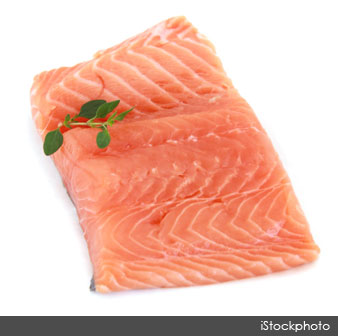
If you want to maximize health benefits from fish, you want to steer clear of farmed fish, particularly farmed salmon fed dangerous chemicals. Wild salmon gets its bright pinkish-red color from natural carotenoids in their diet. Farmed salmon, on the other hand, are raised on a wholly unnatural diet of grains (including genetically engineered varieties), plus a concoction of antibiotics and other drugs and chemicals not shown to be safe for humans.
This diet leaves the fish with unappetizing grayish flesh so to compensate, they’re fed synthetic astaxanthin made from petrochemicals, which has not been approved for human consumption and has well known toxicities. According to the featured article, some studies suggest it can potentially damage your eyesight. More details are available in yesterday’s article.
Where it’s banned: Australia and New Zealand
How can you tell whether a salmon is wild or farm-raised? The flesh of wild sockeye salmon is bright red, courtesy of its natural astaxanthin content. It’s also very lean, so the fat marks, those white stripes you see in the meat, are very thin. If the fish is pale pink with wide fat marks, the salmon is farmed.
Avoid Atlantic salmon, as typically salmon labeled “Atlantic Salmon” currently comes from fish farms. The two designations you want to look for are: “Alaskan salmon,” and “sockeye salmon,” as Alaskan sockeye is not allowed to be farmed. Please realize that the vast majority of all salmon sold in restaurants is farm raised.
So canned salmon labeled “Alaskan Salmon” is a good bet, and if you find sockeye salmon, it’s bound to be wild. Again, you can tell sockeye salmon from other salmon by its color; its flesh is bright red opposed to pink, courtesy of its superior astaxanthin content. Sockeye salmon actually has one of the highest concentrations of astaxanthin of any food.
#2: Genetically Engineered Papaya

Most Hawaiian papaya is now genetically engineered to be resistant to ringspot virus. Mounting research now shows that animals fed genetically engineered foods, such as corn and soy, suffer a wide range of maladies, including intestinal damage, multiple-organ damage, massive tumors, birth defects, premature death, and near complete sterility by the third generation of offspring. Unfortunately, the gigantic human lab experiment is only about 10 years old, so we are likely decades away from tabulating the human casualties.
Where it’s banned: The European Union
Unfortunately, it’s clear that the US government is not in a position to make reasonable and responsible decisions related to genetically engineered foods at this point, when you consider the fact that the Obama administration has placed former Monsanto attorney and Vice President, Michael Taylor, in charge of US food safety, and serious conflicts of interest even reign supreme within the US Supreme Court! That’s right. Supreme Court Justice Clarence Thomas is also a former Monsanto attorney, but refuses to acknowledge any conflict of interest.
#3: Ractopamine-Tainted Meat
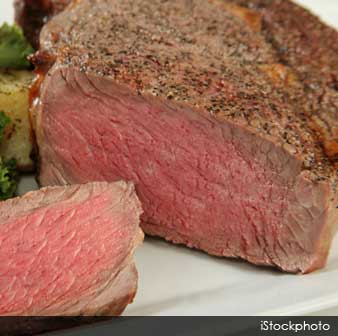
The beta agonist drug ractopamine (a repartitioning agent that increases protein synthesis) was recruited for livestock use when researchers found that the drug, used in asthma, made mice more muscular. This reduces the overall fat content of the meat. Ractopamine is currently used in about 45 percent of US pigs, 30 percent of ration-fed cattle, and an unknown percentage of turkeys are pumped full of this drug in the days leading up to slaughter. Up to 20 percent of ractopamine remains in the meat you buy from the supermarket, according to veterinarian Michael W. Fox.
Since 1998, more than 1,700 people have been “poisoned” from eating pigs fed the drug, and ractopamine is banned from use in food animals in no less than 160 different countries due to its harmful health effects! Effective February 11, 2013, Russia issued a ban on US meat imports, slated to last until the US agrees to certify that the meat is ractopamine-free. At present, the US does not even test for the presence of this drug in meats sold. In animals, ractopamine is linked to reductions in reproductive function, increase of mastitis in dairy herds, and increased death and disability. It’s also known to affect the human cardiovascular system, and is thought to be responsible for hyperactivity, and may cause chromosomal abnormalities and behavioral changes.
Where it’s banned: 160 countries across Europe, Russia, mainland China and Republic of China (Taiwan)
#4: Flame Retardant Drinks

If you live in the US and drink Mountain Dew and some other citrus-flavored sodas and sports drinks, then you are also getting a dose of a synthetic chemical called brominated vegetable oil (BVO), which was originally patented by chemical companies as a flame retardant.
BVO has been shown to bioaccumulate in human tissue and breast milk, and animal studies have found it causes reproductive and behavioral problems in large doses. Bromine is a central nervous system depressant, and a common endocrine disruptor. It’s part of the halide family, a group of elements that includes fluorine, chlorine and iodine. When ingested, bromine competes for the same receptors that are used to capture iodine. This can lead to iodine deficiency, which can have a very detrimental impact on your health. Bromine toxicity can manifest as skin rashes, acne, loss of appetite, fatigue, and cardiac arrhythmias. According to the featured article:
“The FDA has flip-flopped on BVO’s safety originally classifying it as ‘generally recognized as safe’ but reversing that call now defining it as an ‘interim food additive’ a category reserved for possibly questionable substances used in food.”
Where it’s banned: Europe and Japan
#5: Processed Foods Containing Artificial Food Colors and Dyes
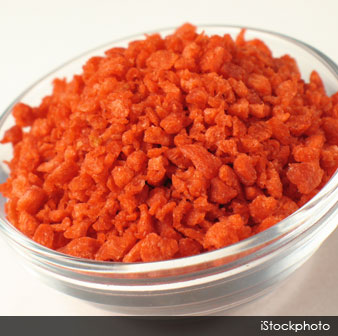
More than 3,000 food additives — preservatives, flavorings, colors and other ingredients — are added to US foods, including infant foods and foods targeted to young children. Meanwhile, many of these are banned in other countries, based on research showing toxicity and hazardous health effects, especially with respect to adverse effects on children’s behavior. For example, as reported in the featured article:
“Boxed Mac & Cheese, cheddar flavored crackers, Jell-O and many kids’ cereals contain red 40, yellow 5, yellow 6 and/or blue 2, the most popularly-used dyes in the United States. Research has shown this rainbow of additives can cause behavioral problems as well as cancer, birth defects and other health problems in laboratory animals. Red 40 and yellow 6 are also suspected of causing an allergy-like hypersensitivity reaction in children. The Center for Science in the Public Interest reports that some dyes are also “contaminated with known carcinogens.”
In countries where these food colors and dyes are banned, food companies like Kraft employ natural colorants instead, such as paprika extract, beetroot, and annatto. The food blogger and activist Vani Hari, better known as “Food Babe,” recently launched a Change.org petition2 asking Kraft to remove artificial dyes from American Mac & Cheese to protect American children from the well-known dangers of these dyes.
Where it’s banned: Norway and Austria. In 2009, the British government advised companies to stop using food dyes by the end of that year. The European Union also requires a warning notice on most foods containing dyes.
#6: Arsenic-Laced Chicken
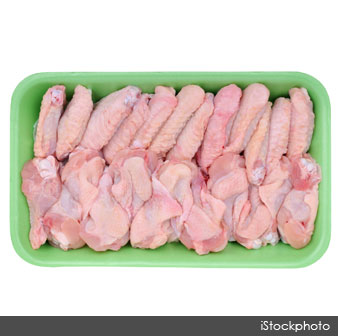
Arsenic-based drugs are approved for use in animal feed in the US because they make animals grow quicker and make the meat appear pinker (i.e. “fresher”). The US Food and Drug Administration (FDA) has stated these products are safe because they contain organic arsenic, which is less toxic than the other inorganic form, which is a known carcinogen.
The problem is, scientific reports surfaced stating that the organic arsenic could transform into inorganic arsenic, which has been found in elevated levels in supermarket chickens. The inorganic arsenic also contaminates manure where it can eventually migrate into drinking water and may also be causing heightened arsenic levels in US rice.
In 2011, Pfizer announced it would voluntarily stop marketing its arsenic-based feed additive Roxarsone, but there are still several others on the market. Several environmental groups have filed a lawsuit against the FDA calling for their removal from the market. In the European Union, meanwhile, arsenic-based compounds have never been approved as safe for animal feed.
Where it’s banned: The European Union
#7: Bread with Potassium Bromate
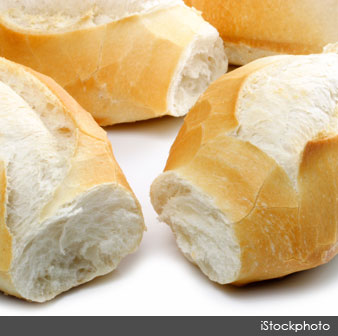
You might not be aware of this, but nearly every time you eat bread in a restaurant or consume a hamburger or hotdog bun you are consuming bromide, as it is commonly used in flours. The use of potassium bromate as an additive to commercial breads and baked goods has been a huge contributor to bromide overload in Western cultures.
Bromated flour is “enriched” with potassium bromate. Commercial baking companies claim it makes the dough more elastic and better able to stand up to bread hooks. However, Pepperidge Farm and other successful companies manage to use only unbromated flour without any of these so-called “structural problems.” Studies have linked potassium bromate to kidney and nervous system damage, thyroid problems, gastrointestinal discomfort, and cancer. The International Agency for Research on Cancer classifies potassium bromate as a possible carcinogen.
Where it’s banned: Canada, China and the EU
#8: Olestra/Olean

Olestra, aka Olean, created by Procter & Gamble, is a calorie- and cholesterol-free fat substitute used in fat-free snacks like chips and French fries. Three years ago, Time Magazine3 named it one of the worst 50 inventions ever, but that hasn’t stopped food companies from using it to satisfy people’s mistaken belief that a fat-free snack is a healthier snack. According to the featured article:
“Not only did a 2011 study from Purdue University conclude rats fed potato chips made with Olean gained weight, there have been several reports of adverse intestinal reactions to the fake fat including diarrhea, cramps and leaky bowels. And because it interferes with the absorption of fat soluble vitamins such as A, D, E and K, the FDA requires these vitamins be added to any product made with Olean or olestra.”
Where it’s banned: The UK and Canada
#9: Preservatives BHA and BHT

BHA (butylated hydroxyanisole) and BHT (butylated hydroxytoluene) are commonly used preservatives that can be found in breakfast cereal, nut mixes, chewing gum, butter spread, meat, dehydrated potatoes, and beer, just to name a few. BHA is known to cause cancer in rats, and may be a cancer-causing agent in humans as well. In fact, according to the US Department of Health and Human Services, National Toxicology Program’s 2011 Report on Carcinogens, BHA “is reasonably anticipated to be a human carcinogen.” It may also trigger allergic reactions and hyperactivity, while BHT can cause organ system toxicity.
Where it’s banned: The UK doesn’t allow BHA in infant foods. BHA and BHT are also banned in parts of the European Union and Japan.
#10: Milk and Dairy Products Laced with rBGH
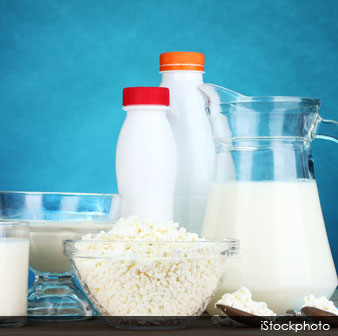
Recombinant bovine growth hormone (rBGH) is the largest selling dairy animal drug in America. RBGH is a synthetic version of natural bovine somatotropin (BST), a hormone produced in cows’ pituitary glands. Monsanto developed the recombinant version from genetically engineered E. coli bacteria and markets it under the brand name “Posilac.”
It’s injected into cows to increase milk production, but it is banned in at least 30 other nations because of its dangers to human health, which include an increased risk for colorectal, prostate, and breast cancer by promoting conversion of normal tissue cells into cancerous ones. Non-organic dairy farms frequently have rBGH-injected cows that suffer at least 16 different adverse health conditions, including very high rates of mastitis that contaminate milk with pus and antibiotics.
“According to the American Cancer Society, the increased use of antibiotics to treat this type of rBGH-induced inflammation ‘does promote the development of antibiotic-resistant bacteria, but the extent to which these are transmitted to humans is unclear,'” the featured article states.
Many have tried to inform the public of the risks of using this hormone in dairy cows, but their attempts have been met with overwhelming opposition by the powerful dairy and pharmaceutical industries, and their government liaisons. In 1997, two Fox-affiliate investigative journalists, Jane Akre and Steve Wilson, attempted to air a program exposing the truth about the dangers of rBGH. Lawyers for Monsanto, a major advertiser with the Florida network, sent letters promising “dire consequences” if the story aired.
Despite decades of evidence about the dangers of rBGH, the FDA still maintains it’s safe for human consumption and ignores scientific evidence to the contrary. In 1999, the United Nations Safety Agency ruled unanimously not to endorse or set safety standards for rBGH milk, which has effectively resulted in an international ban on US milk.4 The Cancer Prevention Coalition, trying for years to get the use of rBGH by the dairy industry banned, resubmitted a petition to FDA Commissioner Margaret Hamburg, MD, in January 2010.5 Although the FDA stubbornly sticks to its position that milk from rBGH-treated cows is no different than milk from untreated cows, this is just plain false and is not supported by science. The only way to avoid rBGH is to look for products labeled as “rBGH-free” or “No rBGH.”
Where it’s banned: Australia, New Zealand, Israel, EU and Canada
Source: Mercola.com
http://www.realfarmacy.com/10-american-foods-that-are-banned-in-other-countries/
|
|
|



» utube MM&C 4/16/24 IQD Update - Iraq Dinar - America - Activate - Massive Economic Deals -
» utube MM&c 4/19/24 Iraqi Dinar - Private Sector - Economic Stability - Financial Reform - Al Sudan
» Iraq officially signs the “Singapore” agreement to resolve trade disputes
» Parliament Finance advises raising exchange rates again... What about oil revenues?
» Al-Sudani: Iraq is in the process of recovery and has taken its leading position that attracts work
» Al-Araji: Iraq is prepared to deal with all circumstances and seeks partnership with the United Stat
» Sudanese from Michigan: The government represents all components and is keen to take care of the aff
» Democratic Party: The "new generation" is the most corrupt and has dozens of cases in court
» What is the benefit of Iraq establishing a petrochemical plant in Egypt?!.. An oil expert explains
» A judicial delegation participates in the Permanent International Forum for Commercial Courts in Qat
» Al-Sudani: The government follows a balanced policy that makes Iraq a station for security
» Deduction of 160 million dinars from the salaries of MPs absent from Parliament sessions
» Central Bank: Washington praised Iraq's measures to resolve 80% of the financial transfer file
» Voices of Resilience: Al-Sudani’s frankness embarrasses the White House
» Al-Alaq confirms the formation of a committee between Baghdad and Washington regarding sanctions on
» Former MP: The Democrat will not hand over power after the regional elections
» Document/allocation of 20% of the lands of Al-Jawahiri Complex to employees of the Ministry of Defen
» Al-Hakim: Al-Sudani’s visit to Washington was a protocol and missed the two most important files
» Parliamentary Security: The National Security Service law will be voted on by Parliament soon
» Reconstruction and Housing: Zarbatieh residential project completed by 82%
» Al-Sudani reveals an intention to establish Al-Faw refinery with a capacity of 300 thousand barrels
» Government readiness to move the Doura refinery to an alternative location.. What are the conditions
» Al-Sudani’s visit to Washington.. Implications and results
» Association of Iraqi Private Banks: The suspension of some electronic payment services yesterday was
» Parliamentary memorandum.. Two solutions were before the Federal Court instead of removing the compo
» Blue fuel... Iraqi steps towards inexhaustible wealth for a century
» For fear of being "upset"... MPs "evade" signing to host Al-Sudani in Parliament
» Al-Sudani’s statement to convert 40% of Iraq’s exports into derivatives.. What does it have to do wi
» An Iraqi-American partnership to benefit from oil field gas
» The Minister of Commerce announces the distribution of the first payments of farmers’ dues for the 2
» Sudanese to members of the Iraqi community in the American city of Houston: Iraq has regained its he
» Romanski announces loans worth $50 million to support the Iraqi private sector
» Prime Minister: We plan to invest production capacities for export
» “Something happened” in Iran and no one is talking about Iraq and Syria. This is what we have so far
» Al-Sudani asks the American Baker Institute for assistance in preparing studies related to the oil m
» The Interior Ministry denies the occurrence of explosions inside Iraqi territory and diagnoses “the
» Tensions between Najaf and Baghdad over the airport... the rule of law over “military force” and the
» Al-Sudani from Washington: We agreed with Abu Dhabi on joint management of Al-Faw Port
» "Al-Party" talks about the region's elections and reveals the reason for refusing to pay salaries di
» Russia's oil is taking more of the Middle East's shares in the Indian market.. How much has Iraq los
» Early next month.. Traffic confirms that the electronic payment system is working only
» The Service Council accuses state departments of refraining from disbursing bonuses because of the m
» Electricity: The Baghdad street lighting campaign will be completed before the middle of this year
» Oil poses two conditions for moving the Doura refinery to an alternative location
» The Foreign Minister reveals the truth about his resignation and the reason for his departure to Erb
» Progress: Al-Halbousi’s acquittal has become conclusive, and his return to the presidency of Parliam
» Disagreements strike Al-Maliki's coalition over choosing the governor of Diyala
» The Union accuses Türkiye of exploiting the political situation for a ground incursion into Iraq
» The Democratic Party: Barzani is eagerly awaiting the results of Al-Sudani’s visit to Washington
» Frame: Al-Halbousi in the news and his return has become a pipe dream
» A parliamentary request to capitalize on Erdogan’s visit to Baghdad to end the water crisis
» Al-Sudani urges the US corporation Honeywell to help finish the Basra refinery
» Al-Sudani Meets with Representatives of Western Media Outlets in Washington
» Chairman of the Investment Authority signs the United Nations Convention on International Mediation
» PM: We will sign a contract to establish the Al-Faw refinery with a Chinese company
» PM arrives in Houston as part of his visit to USA
» Militia Man & Crew 4/18/24 Bush signed it and all presidents implemented it. Iraq’s funds have been
» Iraq is close to launching the electronic signature
» The Basra government discusses with an international oil company the implementation of social benefi
» The Prime Minister confirms to an American company: Gas projects in Iraq are a priority for the gove
» The Minister of Planning discusses with the World Bank mechanisms for scheduling external loans
» Oil sets the twenty-seventh of this month as the date for opening contracts for the fifth complement
» “Electronic begging”...professionalism and fabrication of stories” generates millions of dinars dail
» Al-Sudani calls on the American company Hanwell to contribute to the completion of the Basra refiner
» An American company expresses its willingness to establish LED lighting production lines in Iraq
» Including Iraq.. Iran announces the possibility of exporting 300 megawatts of “renewable electricity
» Political forces present two options to find an alternative to Al-Halbousi
» Parliament is awaiting the arrival of the budget schedules and the government is studying higher spe
» The International Monetary Fund adjusts its expectations for the development of the world’s economie
» A representative talks about the difficulty of finalizing the file of “electing the Speaker of Parli
» Work on preparing a law for diplomatic passports
» A female representative accuses the Ministry of Immigration of corruption
» Minister: Solving the Kurdistan salaries problem is the beginning of addressing other disputes betwe
» About 270 million dollars were sold by the Central Bank of Iraq in the currency auction
» The volume of trade exchange between Jordan and Iraq will exceed 800 million dinars in 2023
» Iraq signs memorandums of understanding with American companies in the fields of electricity, oil an
» The American company that manufactures the F16 expresses its readiness to implement the terms of con
» The volume of expected Qatari investments for the Iraq Fund for Development exceeds $3.5 billion
» Decrease in dollar prices in Baghdad and Erbil
» The President of the Region brings together the Kurdish parties to resolve the election file
» Al-Sudani receives in Washington the Chairman of JPMorgan
» Transport is starting to transform its ports into smart ones
» Sudanese reveals the volume of exchange with America
» "Al-Eqtisad News" publishes the memorandums of understanding signed between the Iraqi delegation and
» Al-Sudani urges an American company to contribute to establishing a chemical materials factory
» Iraq stresses the importance of Lockheed Martin's commitment to opening military aircraft maintenanc
» Iraq is on the verge of a “water disaster” by 2035
» Great satisfaction and optimism with the results of Sudanese’s visit to Washington
» Transport is beginning to adopt a plan to transform its ports into smart ones
» Completed 8,000 loan transactions at the Housing Bank
» Prime Minister: We plan to invest production capacities for export
» Transformation and partnership...a new horizon in Iraqi-American relations
» What is new in the economic dimension of the Washington visit?
» Two letters to the future
» National interests first
» Iraqi-American rapprochement...a national necessity
» Al-Sudani’s visit to Washington and the course of Iraqi-American relations
» Sudanese carries security, economic and development files to Washington